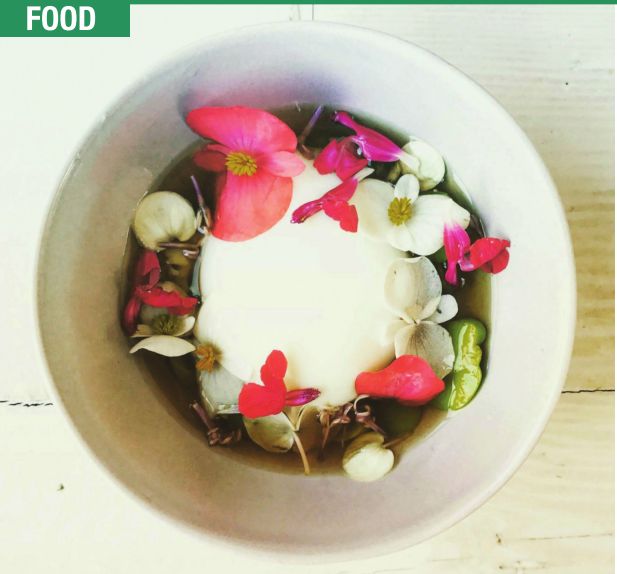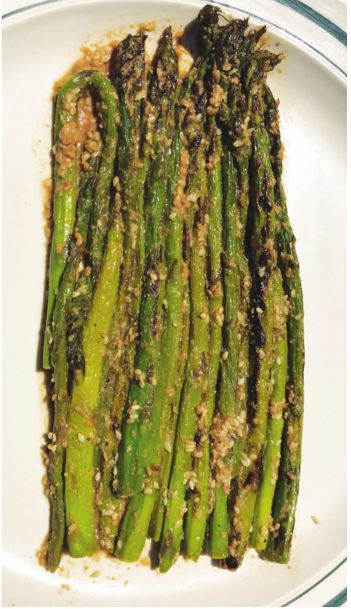
Into the kitchen of one of Chicago’s best new restaurants
I recognized the look. I see it every time I walk in the back door of a new restaurant. “I’m Peter, and I’m here to stage.” (A stage is an unpaid, short-term internship when a cook works in another chef’s kitchen to learn and be exposed to new techniques and cuisines.) From someone expecting a much younger person, I am given the once-over with eyes settling on my wrinkled skin and gray hair. “Hi. I’m Mary. Chef Regan told me you’d be coming.” She leads me through a trap door in the dining room floor down a staircase into the basement prep kitchen. Chef Mary shows me a cellar-like back room where I hung my coat and donned my cap and apron.
I am in Kitsune, a tiny 24-seat restaurant on Chicago’s north side. Kitsune, named for the mythological Japanese red fox of Hokkaido, is the newest endeavor from Iliana Regan, a Food & Wine magazine Best New Chef 2016 and James Beard Awardnominated chef-owner of Michelin-starred Elizabeth Restaurant. Chicago magazine declared Kitsune among the “Best New Restaurants 2017.”
I have staged at Elizabeth four different times and have achieved a familiarity and comfort and effectiveness in that kitchen. The 10- to 12-hour days are long and aggravating to the bulging discs in my lower back, but I know where everything is and what’s supposed to be done. I assumed my experience at Elizabeth would transfer to Kitsune. I was wrong.
Kitsune is a Midwestern take on a Japanese izakaya. An izakaya is a drinking establishment that serves snacks. When I heard that Chef Regan was opening a casual Japanese restaurant I wondered how her success at Elizabeth Restaurant, a high-end, local-grown and foraged tasting menu, would translate into a casual Japanese pub concept.
Kitsune’s basement prep kitchen does not resemble any restaurant prep kitchen I’ve ever worked in. It more resembles the microbiology lab I used to work in when I was in college. A large-capacity dehydrating unit is full of sheet trays drying little bits of scallop trimmings, an assortment of mushrooms and vacuum-sealed bags of fermenting vegetables, including homemade miso. There is no stove or oven. Instead the prep cooking is done “sous vide” in PolyScience immersion circulators – large containers filled with circulating water held at a precise and constant temperature. Ducks, which are being dry-aged, hang on hooks in the walk-in cooler. Blanched stinging nettles are transformed into green ramen noodles.
“We make everything from scratch.”
Chef Mary explains. Kitsune is not a Japanese restaurant aiming for traditional authenticity. Instead, traditional Japanese home cooking techniques and flavor profiles are used with Midwestern ingredients. The bread dough is made with wild rice and fermented porridge. The bread is served with homemade
cultured butter. Homemade miso, usually made with soybeans, is being
made at Kitsune by fermenting red lentils with kogi, the same mold used
in making soy sauce and sake.
The
immersion circulators are often filled with dozens of eggs, slowly
cooking at low, controlled temperatures. Different textures and
consistencies can be achieved by varying the temperature and cooking
times in the immersion circulators. One of the dishes on the Kitsune
menu resulting from this technique is the “Onsen” egg. “Onsen” refers to
the hot geothermal springs found throughout Japan. The
temperature-stable spa waters have the perfect level of heat for making
soft-cooked eggs. The traditional way of making Onsen eggs is to place
eggs into rope nets and leave them in a hot spring, with water that is
approximately 158 degrees for 30 to 40 minutes. The resulting
soft-cooked egg has a wonderful, delicate custardy texture while the
yolk comes out firm, but retains the color and creamy texture of an
uncooked yolk. At Kitsune, the Onsen eggs are cooked in the immersion
circulators and are served with dashi (a Japanese stock), fava beans and
tiny, edible flowers.
Capturing
the essence of another culture’s cuisine using local ingredients
requires significant research and experimentation. To achieve this goal,
Chef Regan partnered with a young chef, Justin Behlke, who serves as
culinary director and head of research. Justin traveled to Japan to
immerse himself in the flavors, aromas and techniques of Japanese
cuisine. He returned to the U.S. and began experimenting with the broths
and fermentations and preparations that now form the backbone of the
Kitsune menu. I first met Justin when I was working at Elizabeth. While
the rest of the staff was busy preparing for the evening’s service,
Justin was working independently, tweaking the variables of bread and
broths and transforming flavors through fermentation. And based on the
glowing reviews of the restaurant and the difficulty obtaining a
reservation, he is doing this very successfully.
Kitsune is located at 4229 N. Lincoln Avenue in Chicago. www.kitsunerestaurant.com
The
traditional wilted spinach dish gomae is usually made with toasted
sesame seed paste. At Kitsune it undergoes a makeover with a nutty sunfl
ower paste dressing over wilted Swiss chard with fresh ginger and
bonito fl akes on the side.
I’ve
made the gomae with the traditional sesame seed paste and spinach or
asparagus, two vegetables that have come into season locally. This is my
version:
ASPARAGUS AND SPINACH WITH GOMAE
Other green vegetables such as string beans and snow or sugar snap peas are wonderful with this dressing.
• 1 lb. fresh asparagus
• 1 lb. fresh spinach
• ½ cup white sesame seeds, lightly toasted
• 4 tablespoons seasoned rice wine vinegar
• 2 tablespoons naturally brewed soy sauce, such as Kikkoman Wash the vegetables.
Trim the tough ends of the asparagus.
Steam the asparagus until just crisp/tender 2-5 minutes, depending on
thickness. Alternatively, cook the asparagus over medium high heat in a
covered pan with about ¼ cup water until just crisp/tender. The
asparagus can also be grilled. Steam the spinach, or cook in a covered
pan just until wilted. Drain and cool to room temperature. Put the
remaining ingredients in a blender or food processor and process until
they form a rough purée. Arrange the vegetables decoratively on a
platter and drizzle with the dressing just before serving.
Serves 4–6.
Contact Peter Glatz at [email protected].